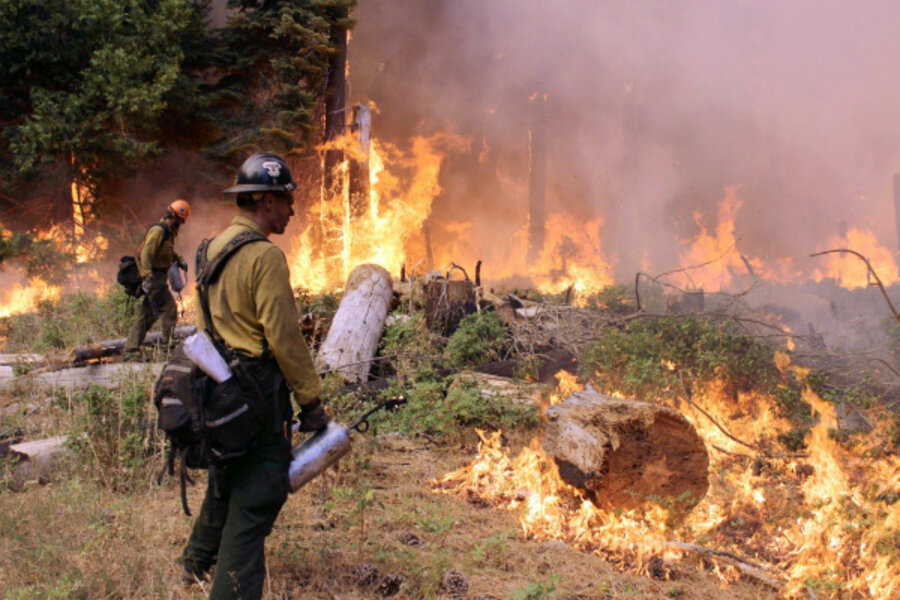Is Yosemite Rim fire air pollution? Some Californians could get fined for it.
Loading...
| LOS ANGELES
The Yosemite Rim fire was some 80 percent contained as of Wednesday morning. But the fourth-largest fire in California history is still sending air pollution indexes climbing to record levels, especially in regions of Nevada and California unaccustomed to such heavy particulates in the air.
“We are still keeping our athletic teams inside for football and soccer practice,” says Elisabeth Noonan, superintendent of the 450-mile-wide Douglas County School District, in Minden, Nev., some 75 miles from the blaze.
The Air Quality Index (AQI) hit 169 by 8 a.m. Wednesday morning, she says, “and that’s considered unhealthy for all groups, not just sensitive ones such as young children or the elderly.”
At the same time, the dense smoke keeping Nevada school children inside for recess is also spotlighting the challenges many communities face when trying to balance air quality issues with fire management needs.
The levels of smoke from the growing number of large wildfires is creating serious challenges for regions such as the San Joaquin Valley, south of Yosemite National Park. “Wildfires in general are a huge detriment to public health in the San Joaquin Valley,” says Seyed Sadredin, an air pollution control officer at the San Joaquin Air Pollution Control District.
When the heavy smoke flows into the valley, the air pollution monitoring system doesn’t differentiate between the various sources, such as industry, automobiles, or wildfires, he says. If the region exceeds allowable AQI limits, it is hit with fines and loss of federal funds, he adds.
The Environmental Protection Agency does allow for exceptions, but they can take years to obtain. Mr. Sadredin notes that his agency is still awaiting approval of its application for an exception to violations that occurred during a record season of some 3,000 wildfires during 2008.
San Joaquin Valley residents are currently paying an additional $12 to renew their auto registrations, due to a $30 million fine imposed after air quality violations during a December 2012 fire, he adds.
Fuel buildup in the forests around Yosemite has been cited as a major factor in the scale and duration of the conflagration that officials now hope to contain no sooner than Sept. 20. Yet, ambient smoke from the necessary controlled burns also can negatively impact regions under strict air pollution standards.
This tends to discourage communities from doing the necessary controlled burning, which leads to less managed fire and more wildfire, says Scott Stephens, professor of fire science at the University of California at Berkeley.
This will only increase as the climate continues to warm, he says. “Regulations should be modified to allow more managed fire with careful consideration for human health,” adding via e-mail.
“It’s a real challenge to keep all these values in balance,” says Ann Hobbs, air quality specialist in Placer County Air Pollution Control District, in Auburn, Calif., roughly 100 miles northwest of the park.
Last month, Ms. Hobbs helped launch Northcasmoke.blogspot.com, a regional resource for officials and private citizens who want the best real-time information on air quality. Rather than having to jump from one air district to another, “people can come to a one-stop shop to find out about the air in their region," she says.





